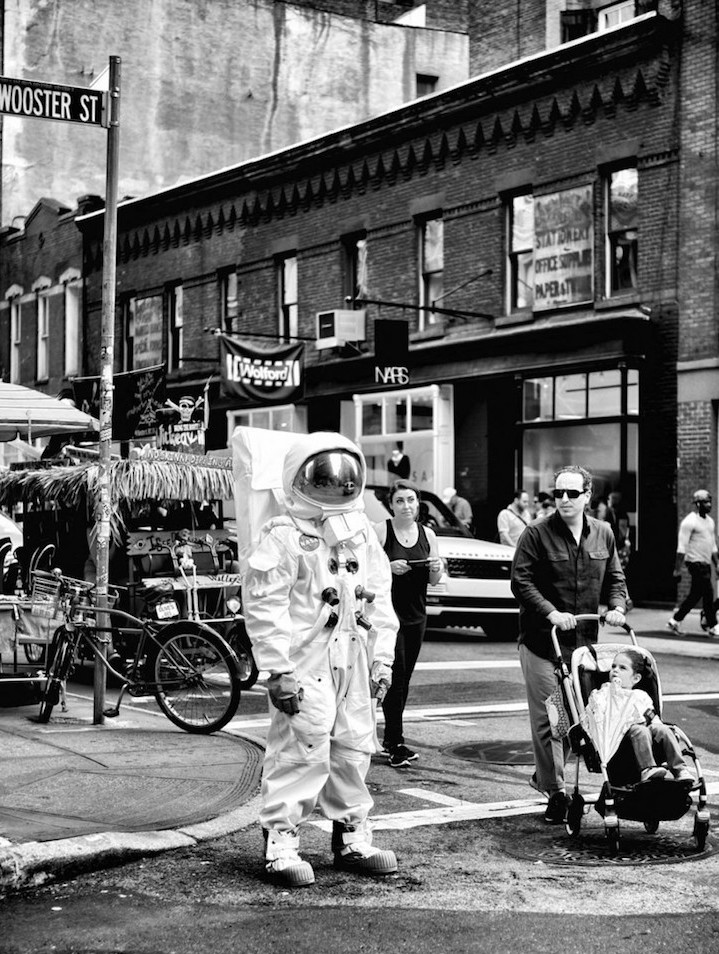I don’t worry so much about the development of superintelligence as I do a lack of basic intelligence.
Liberal government is in retreat in 2016, and America now has a climate-change denier as President-Elect even as China, with its atrocious air pollution and scary cancer rates, should be serving as a fossil-fuel cautionary tale. Sometime it seems the phones have gotten smart and the people have not.
Our powerful new tools, with all their potential for greatness, have bedeviled us in a variety of ways, exacerbating wealth inequality and making it possible for some nations to remotely tamper in the elections of others. The tech advancements that further emerge will also be both boon and bane. A hammer is a tool or a weapon depending on how you swing it, and all the virtual swords will be double-edged.
In forecasting our world in 2050 in a smart Datamation piece, Donald Prell doesn’t ignore the species-ending potential of global warming, though he takes a techno-optimist’s view of tomorrow, believing answers will emerge before the questions kill us.
His line about the seamlessness of actual and virtual life I quoted in the headline, however, seems to me as much a threat as a promise. Perhaps we shouldn’t forget the difference, maybe it’s not best to be able to squeeze a VR tour of the Holocaust into our lunch break. Time will tell if removing the borders was wise, though they likely will vanish.
An excerpt:
The Internet of today has instantaneously allowed people-to-people contact worldwide. In 2050 all of the world’s population will be in touch with each other, making the world borderless. However, there will be problems; privacy will have become obsolete, our private information will all be part of public records on the Internet. A new international body – combining the present ICANN in California and the International Telecommunication Union (ITU) in Geneva – will be regulating privacy, security, standards and all of the technological attributes of the Internet.
Everyone will be having fun using Virtual Reality. If you and your friends decide to play a game about World War II, you all will have the option of hopping off the couch and join with the troops storming the beaches of Normandy. A university professor at UCLA will meet with his or her colleagues from MIT and the University of London in one office to discuss the mater at hand.
Augmented Reality (AR) will allow those using special hardware to view the real world environment in which reality is modified by a computer. Imagine a construction worker using an AR helmet on the construction site, or an architect viewing his plans for a building while visiting the site where the building is to be constructed. Medical school students taking physiology will visualize different systems of the body in three dimensions. With AI-powered robots having more computational power than the human brain, it’s likely that by 2050 we will be able to upload digital versions of our brains and be able to exist in that dynamic form forever! Which brings up the question: what does life mean?
In 2000 the U.S. Food and Drug Administration approved the first robotic surgical tool. The da Vinci Surgical System couples a robot with telepresence technology, allowing a surgeon to be in one location and the patient, along with the surgical robot in another. By 2050, for some operations, the surgeon will not be needed – Dr. Robot will handle the total operation. Smart drugs will enhance cognitive brain function and neural connectivity while strengthening the prefrontal cortex and boosting memory and recall.
In 2050, robots will play a major role in monitoring and caring for our planet. Bee bots will assist in the pollination of crops that we previously relied on biological bees to perform. Using special optics, including infrared cameras, robots will be used where humans fear to tread. Artificial intelligence coupled with advanced sensors will enable the robots to become decision-makers, which will allow them to be used in many occupations.
3D printers will be common in every household. Simple objects a person might need will be created by a computer/printer filled with different compounds similar to ink, which will allow it to create in a few minutes an object that is requested. The blueprints for objects will come from a public database, available online.
A computer bought in 2050 will be a billion times more powerful than the one I am using now to write this article. That means several computersin 2050 will have the same computing power as all the computers existing today!
Almost invisible pervasive computers will be everywhere: buildings, highways, vehicles, even in the clothing we wear. In 2050 your digital life and your real life will be almost seamless.•
Tags: Donald Prell

